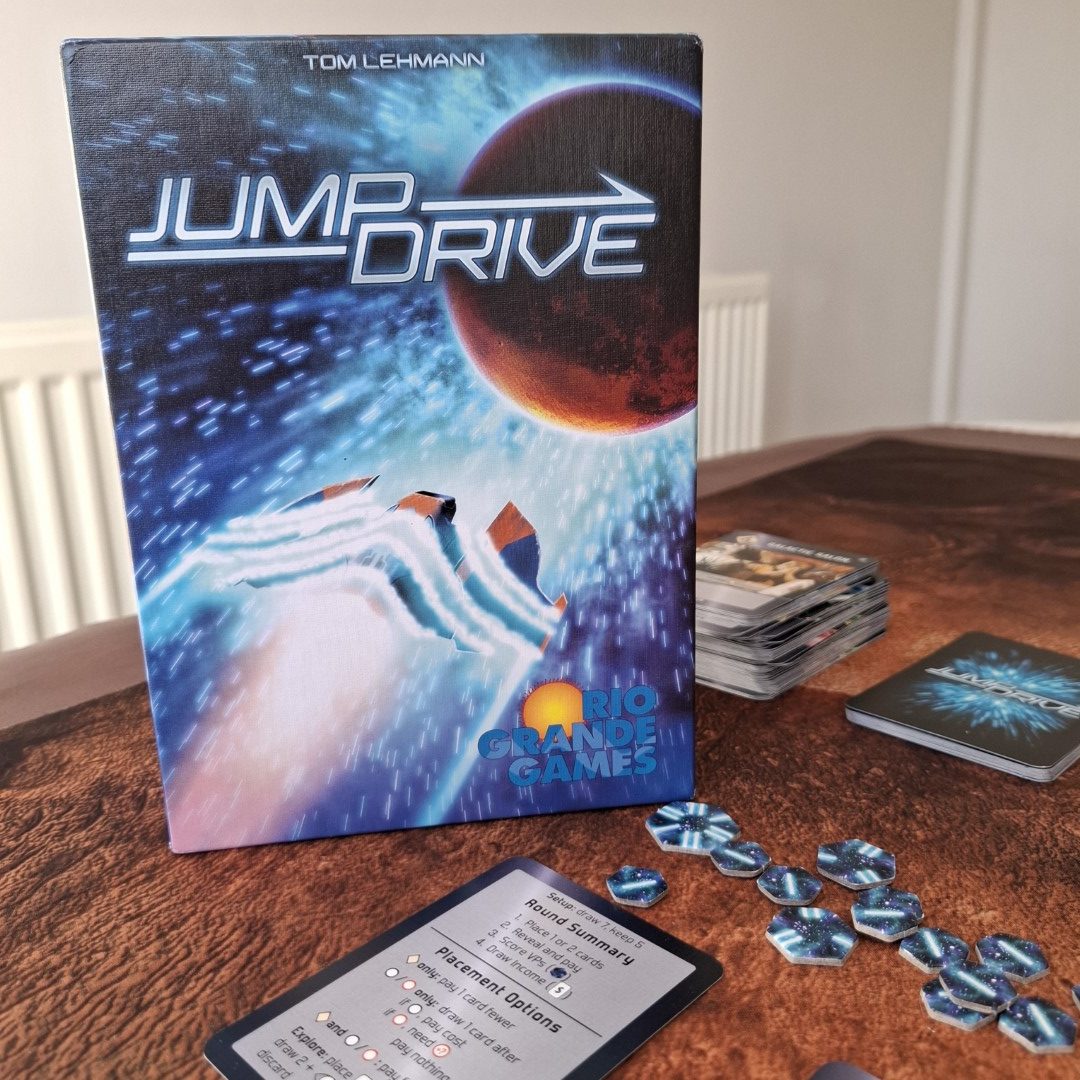Have you ever read a review written at 3 AM? Well, today you’re in for a treat! Brace yourself for potentially terrible pacing, unexpected mid-point twists, and who knows what else. Grammar and spelling? No promises!
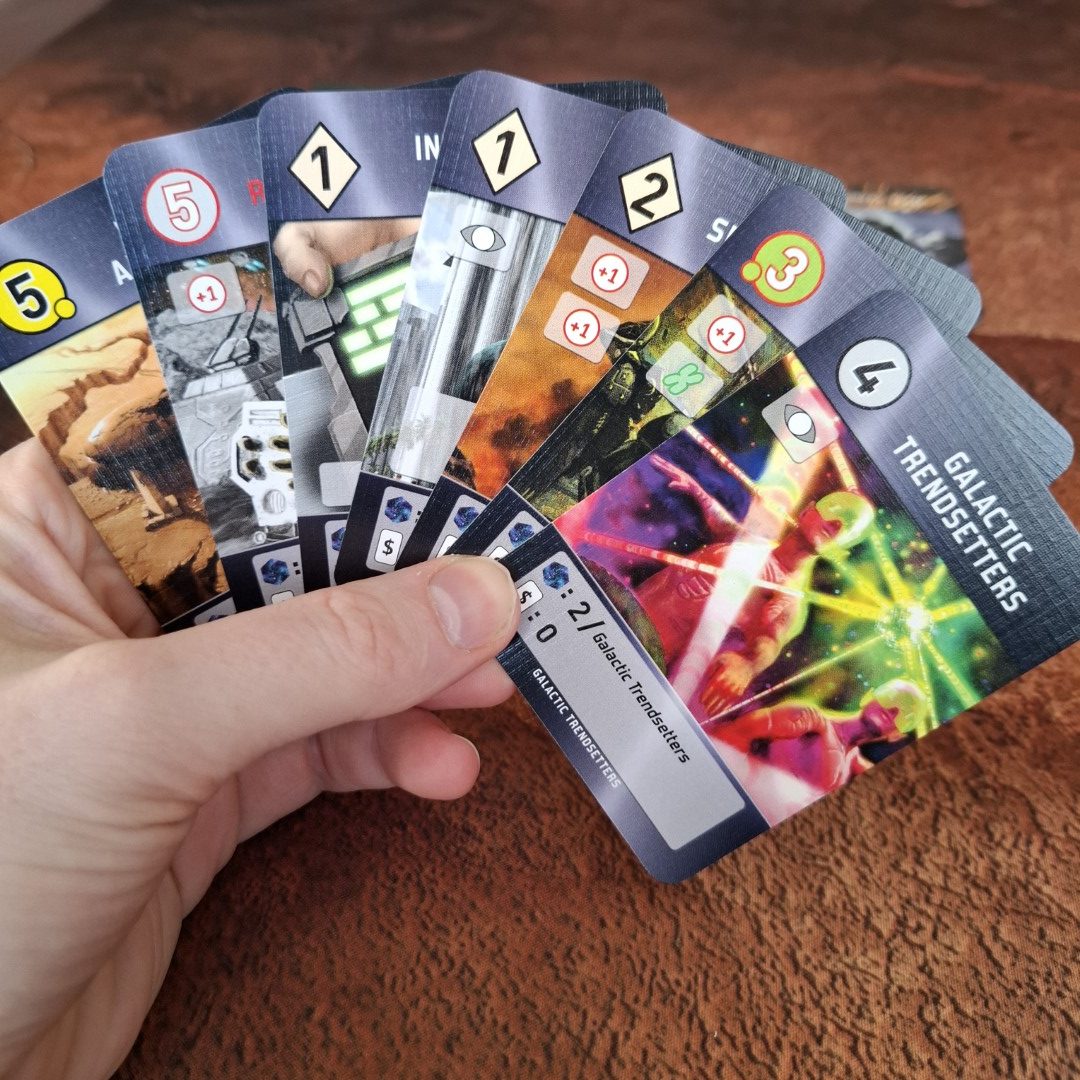
Jump Drive: The Basics
Jump Drive, from Rio Grande Games, is often considered “Race for the Galaxy Light”—a prequel or stepping stone to its bigger sibling. But should we even compare the two? Or is it inevitable that this comparison will always be made?
Jump Drive puts you in the pilot’s seat of galactic exploration, powered by the discovery of the Jump Drive itself! You’ll settle new worlds, develop new technologies, and chase those sweet, sweet victory points.
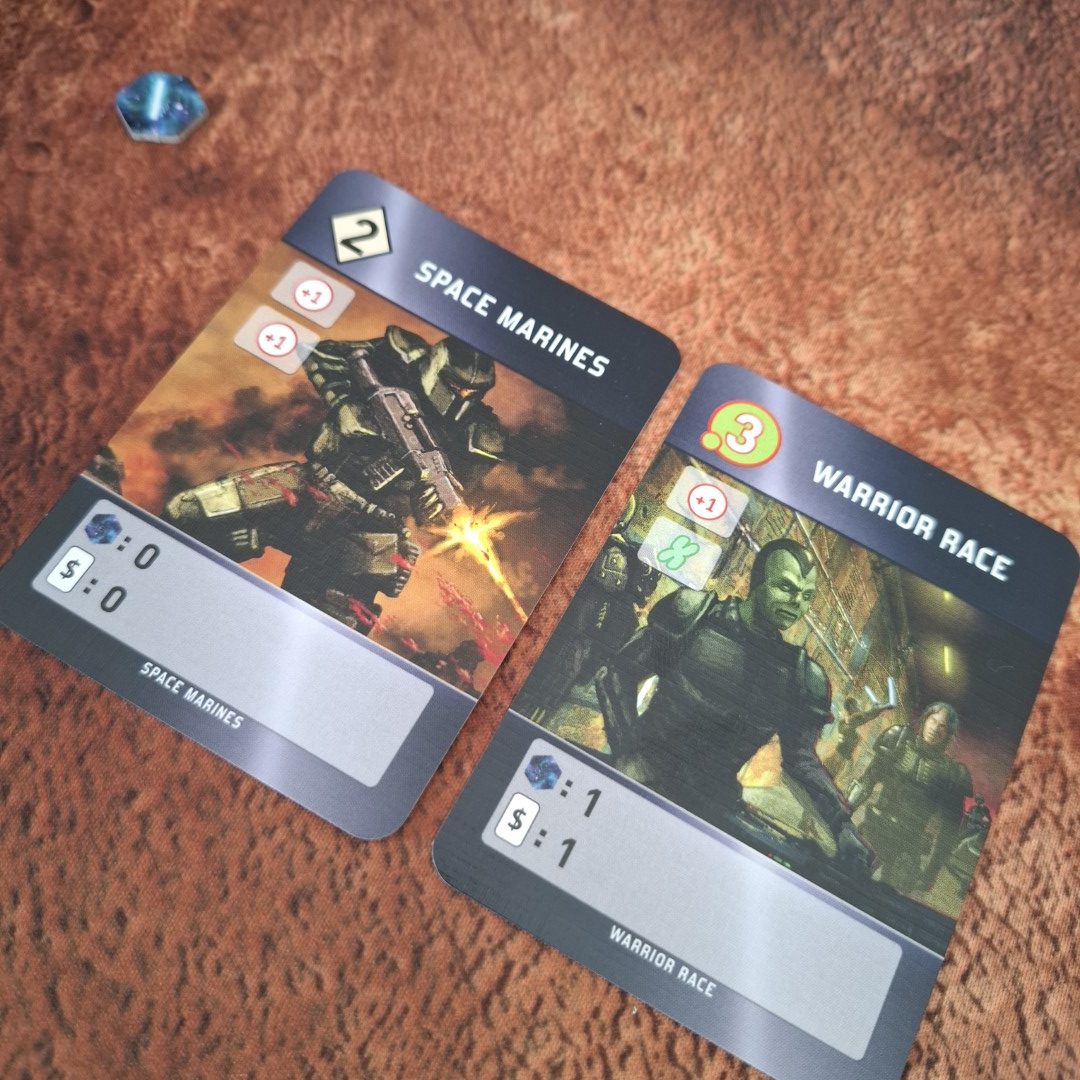
How to Play
While Jump Drive shares some DNA with Race for the Galaxy, knowing one doesn’t necessarily mean you’ll instantly grasp the other. The game plays over several rounds until one player reaches 50 victory points. In my experience, most games last no more than eight rounds, and the rulebook’s estimate of six to seven rounds is pretty accurate.
The game revolves around cards, which come in two types: Developments and Worlds. Each card has a cost (sometimes zero) and abilities that can include victory points, military power, or income generation.
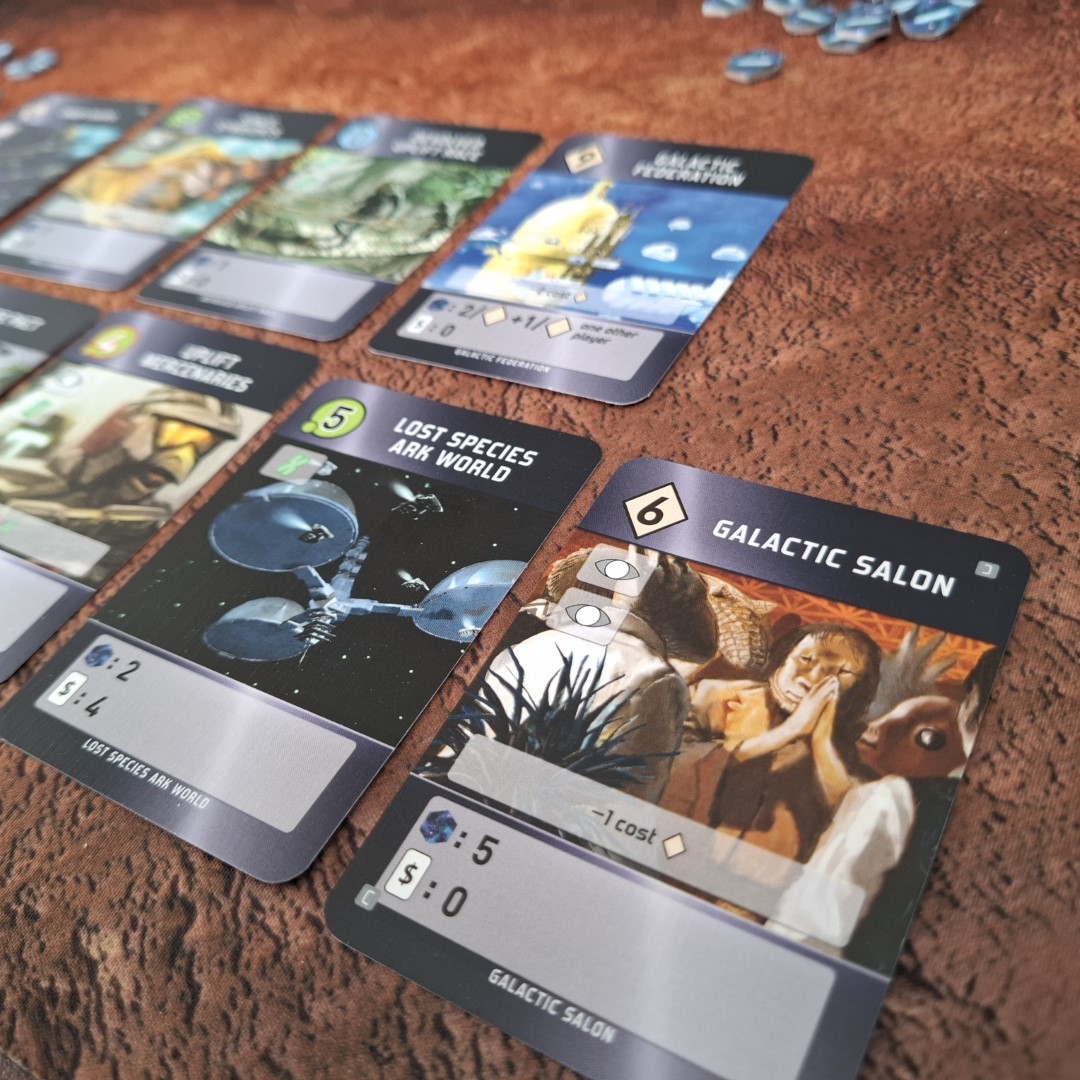
Turn Structure
- Players select one or two cards from their hand and play them face down.
- Everyone reveals their cards simultaneously and pays the cost, shown in the top-left corner.
- Costs are paid by discarding cards from your hand. For example, a card costing 3 requires discarding three other cards.
- Military cards, however, require sufficient military strength instead of discarding.
So on your turn, you Can Choose to:
- Play a Development card (paying one card fewer).
- Play a World (and then draw a card).
- Play both a World and a Development.
Or You Can:
- Explore: Spend your entire turn drawing cards. You draw at least two cards plus additional ones for any Explore icons in your empire, then discard two.
Ideally, you don’t want to explore more than once per game. Playing cards is the key to generating victory points. After everyone has finished their turn, players gain income (both in cards and victory points) based on their empire before starting the next round.
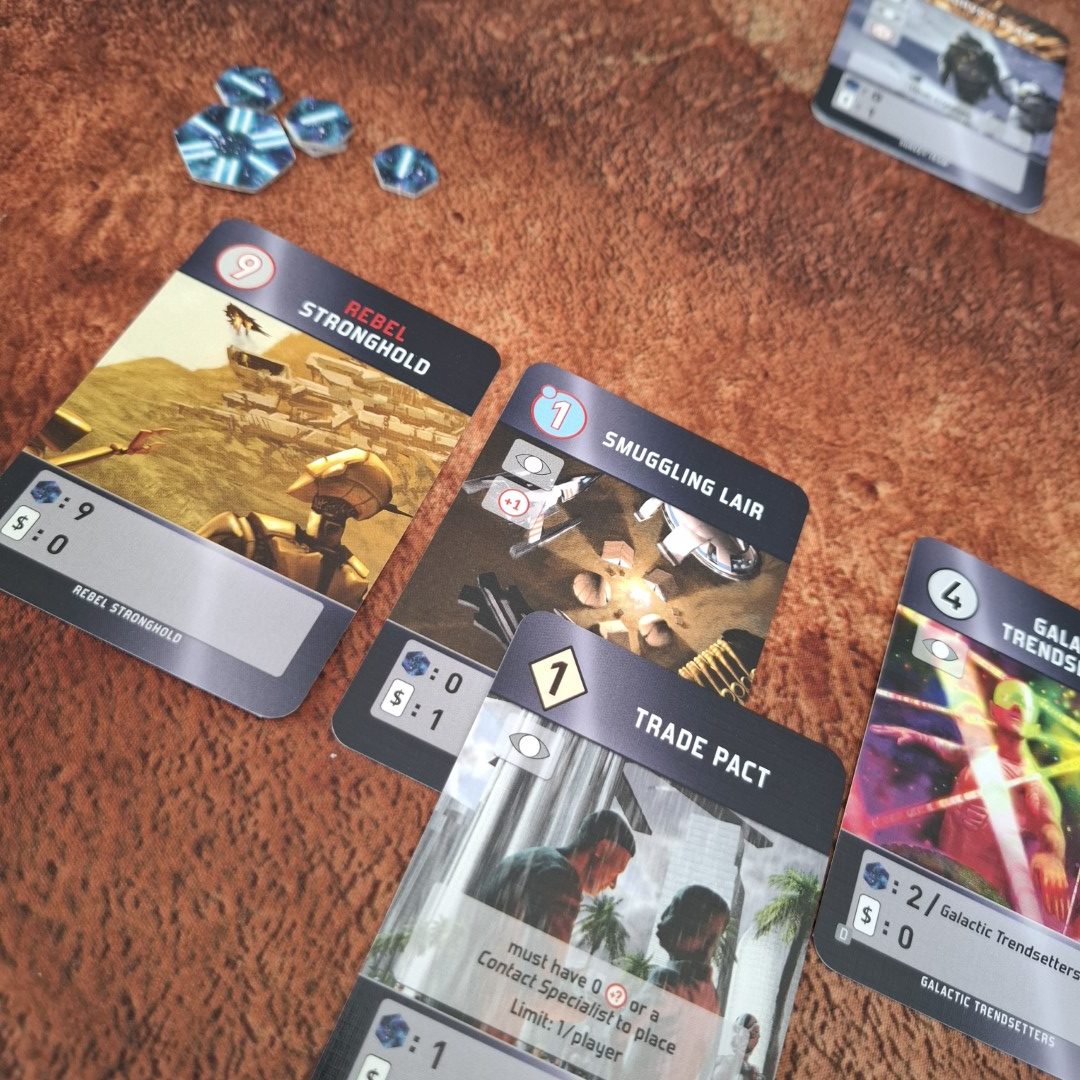
Initial Thoughts
I don’t particularly love Race for the Galaxy. It feels overwhelming, with icons everywhere, and I often find myself lost—then suddenly, the game is over. Unsurprisingly, Jump Drive has the same icon-heavy approach, and the game ends after just six or seven rounds. My first few plays felt similar to Race for the Galaxy, but to a much lesser extent
One challenge is the lack of a crib sheet for icon explanations. Some might argue it’s unnecessary, but I found myself constantly asking, “What does this icon mean?”—which probably got annoying. That said, Jump Drive doesn’t have the same steep learning curve as Race for the Galaxy.
(Side note: There is a round summary card with some icon explanations, but we didn’t notice it until our third game because it was shuffled in with the rest of the deck.)
The game is surprisingly quick. The box says 30 minutes, but I’ve never had a game last more than 15. Even with more than two players, the simultaneous turns make it fly by. The jump from 0 to 50 victory points happens fast.
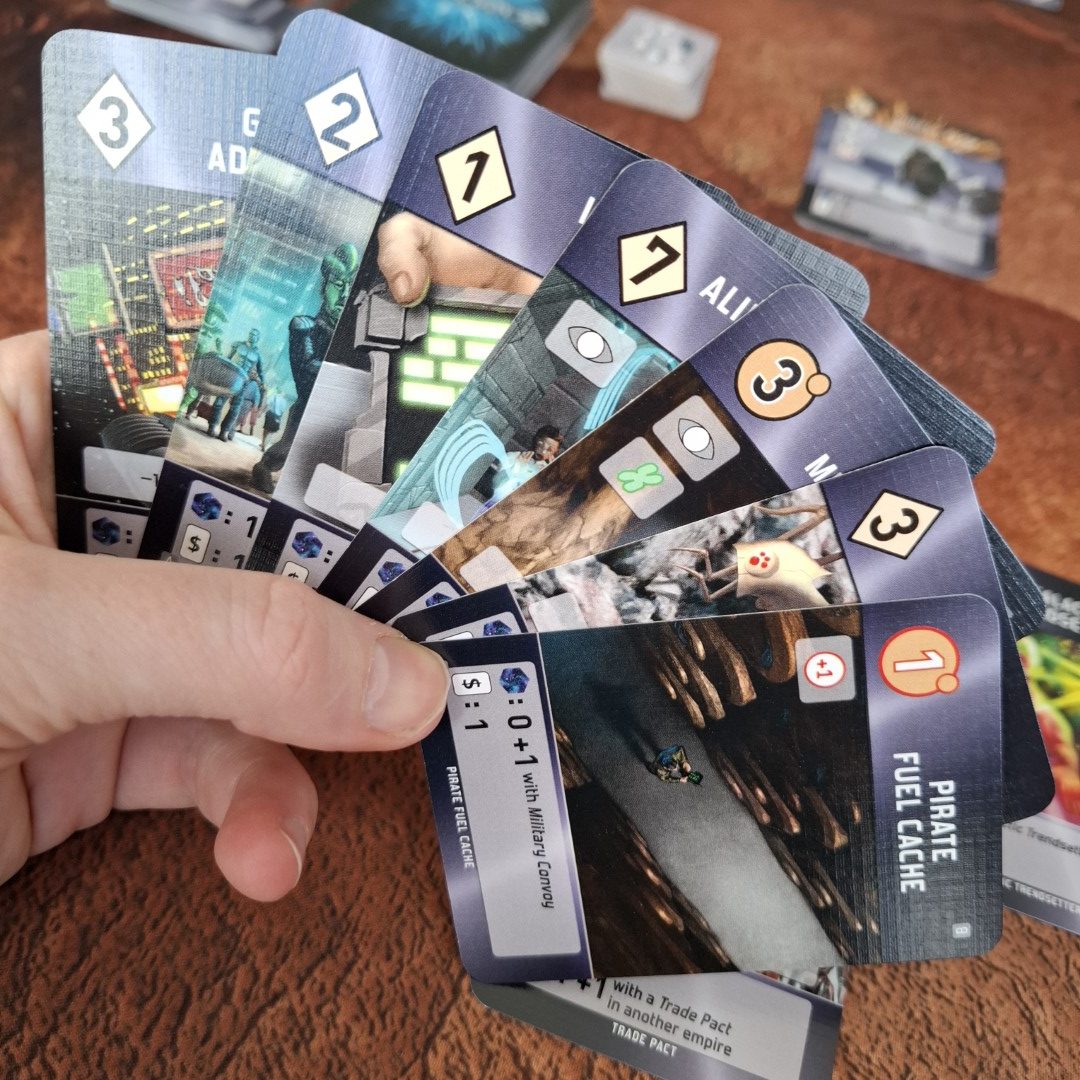
More Plays, More Thoughts
With more plays, Jump Drive has started to click for me. However, I’ve found myself exploring more often than I’d like, which isn’t ideal. One player pointed out I was struggling with card income, and after discussing my hand, we all agreed—it was just a bad draw. That’s the nature of card games: a bit of luck is always involved.
There are also a couple of cards that feel particularly strong. I wouldn’t call them overpowered, but they definitely stand out. A bit more balancing in playtesting might have been beneficial.
While I’ve enjoyed Jump Drive, I’m not sure it earns a spot in my board game bag alongside Castle Combo, Faraway, and Ecosystem: Savanna. It’s a good game, but is it essential? I’m not convinced.
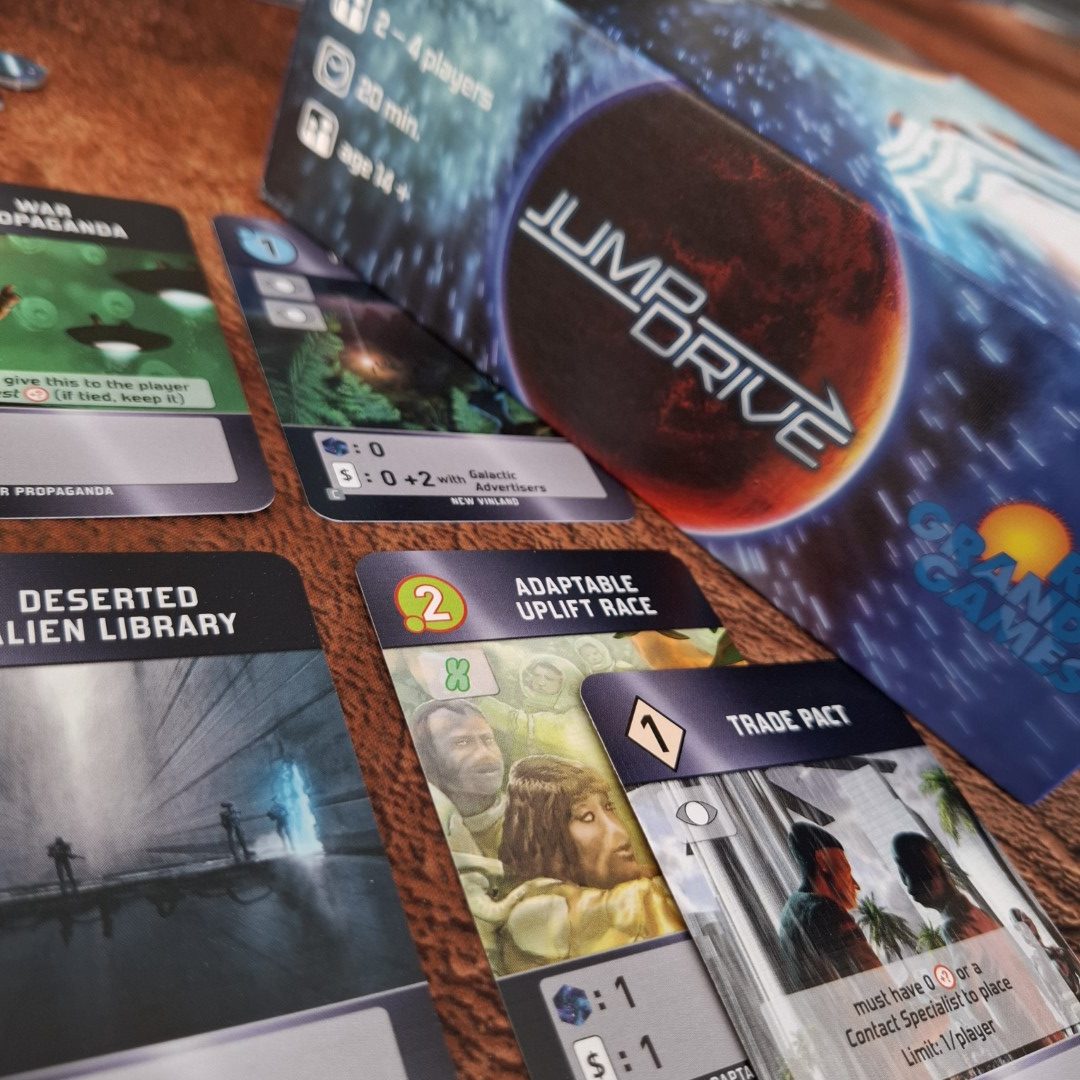
Component Quality & Iconography Frustrations
One major disappointment is the card quality. The cards feel grainy and even leave a dusting when shuffled. For a game priced at £30, I expected better, especially since many assets are reused from Race for the Galaxy.
My biggest frustration remains the iconography. Take the Galactic Federation card, for example. Initially, we misread it as “2 points per development plus 1 or 2 points per development of another player.” In reality, it sort of meant both. The problem? A slash (/) is often used to indicate a choice, which caused confusion. While the rules do clarify that some cards provide variable victory points based on icons or card types, the inconsistency in how symbols are used is annoying.
A better summary of abilities would have been helpful. Yes, there’s a round summary and an example turn in the rulebook, but a clear icon reference guide would have been a better inclusion.
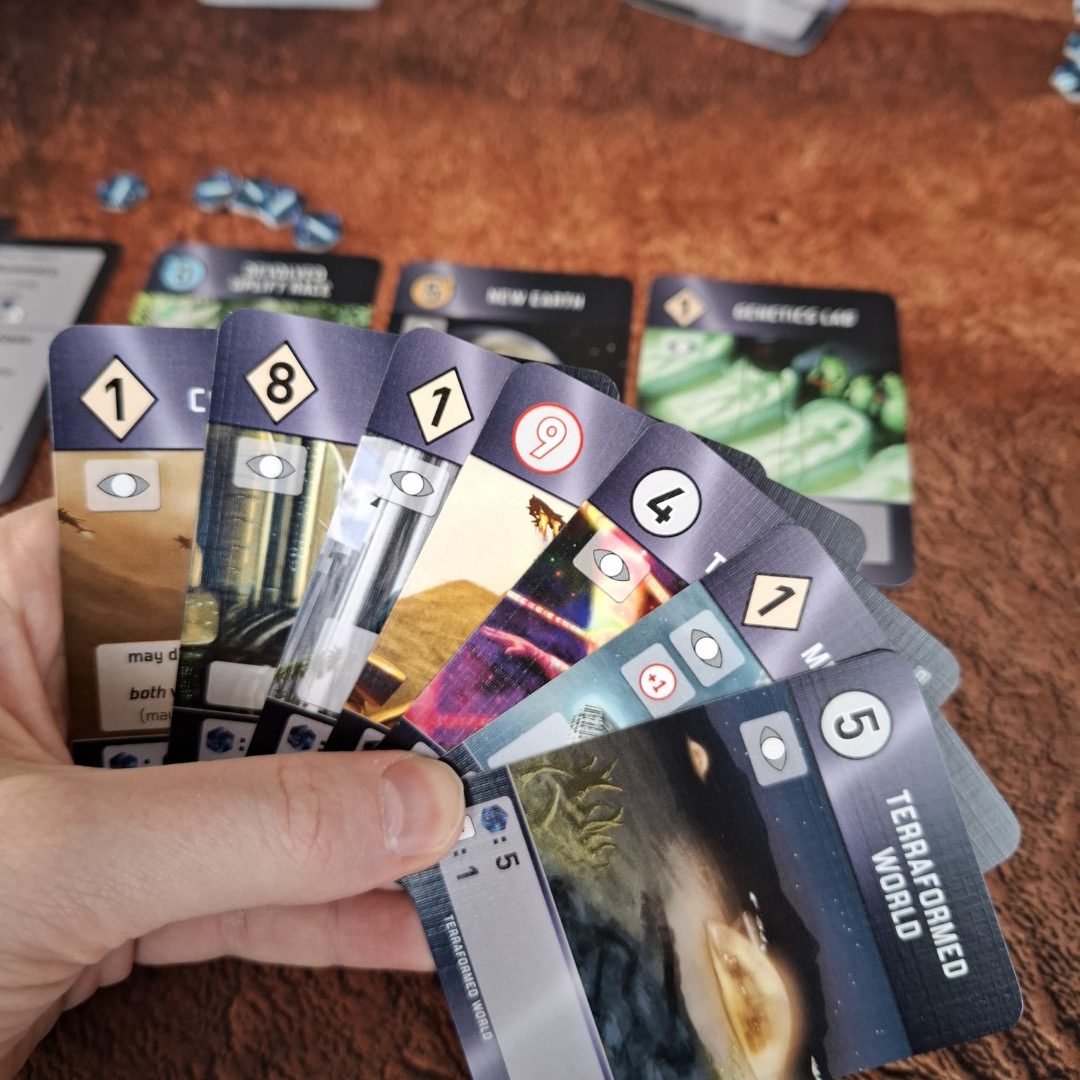
Final Verdict
As you know I rate games on the following scale:
- Buy or Play
- Wait for Sale or Play if You Like Game XYZ
- Avoid
Jump Drive is a solid game, but enjoying Race for the Galaxy doesn’t necessarily mean you’ll love it. However, if you like small-box card games and can overlook minor flaws (card quality, unclear abilities, a few imbalanced cards, and some luck factor), it’s worth checking out.
Will Jump Drive earn a permanent spot in my game night rotation? Only time will tell. It’s quicker than many alternatives, but the iconography remains a barrier to entry.
Final Recommendation: Play or Wait for Sale. I wouldn’t pay £30 for it.
Side Note: My copy’s insert was damaged and torn upon opening. I haven’t factored that into the review, but it’s worth mentioning.
